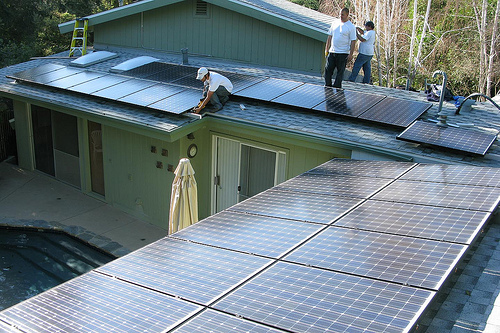Yesterday, Lt. Gov. David Dewhurst said cold weather had knocked out about 50 of the 550 power plants in Texas, totaling 8,000 megawatts. We can’t tell you which plants were down because that information is considered “confidential under market rules.” According to ERCOT’s website, its market rules “are developed by participants from all aspects of the electricity industry” and reviewed by the Public Utility Commission. This coupled with an increase in demand caused the Electric Reliability Council of Texas to launch the longest period of planned outages in state history, affecting 1.4 million consumers before being halted mid-afternoon.
What we do know is wind energy played a major role in keeping the blackouts from becoming more severe. Between 5 and 7 am yesterday morning (the peak of the electricity shortage) wind was providing between 3,500 and 4,000 MW, roughly the amount it had been forecast and scheduled to provide. That is about 7% of the state’s total electricity demand at that time, or enough for about 3 million average homes. (more…)

 Thanks to Luke Metzger at the
Thanks to Luke Metzger at the  This week citizens submitted two separate filings to the Nuclear Regulatory Commission (NRC) opposing Luminant (formerly TXU)’s proposed Comanche Peak nuclear reactors. Petitioners include state Rep. Lon Burnam, the
This week citizens submitted two separate filings to the Nuclear Regulatory Commission (NRC) opposing Luminant (formerly TXU)’s proposed Comanche Peak nuclear reactors. Petitioners include state Rep. Lon Burnam, the 

